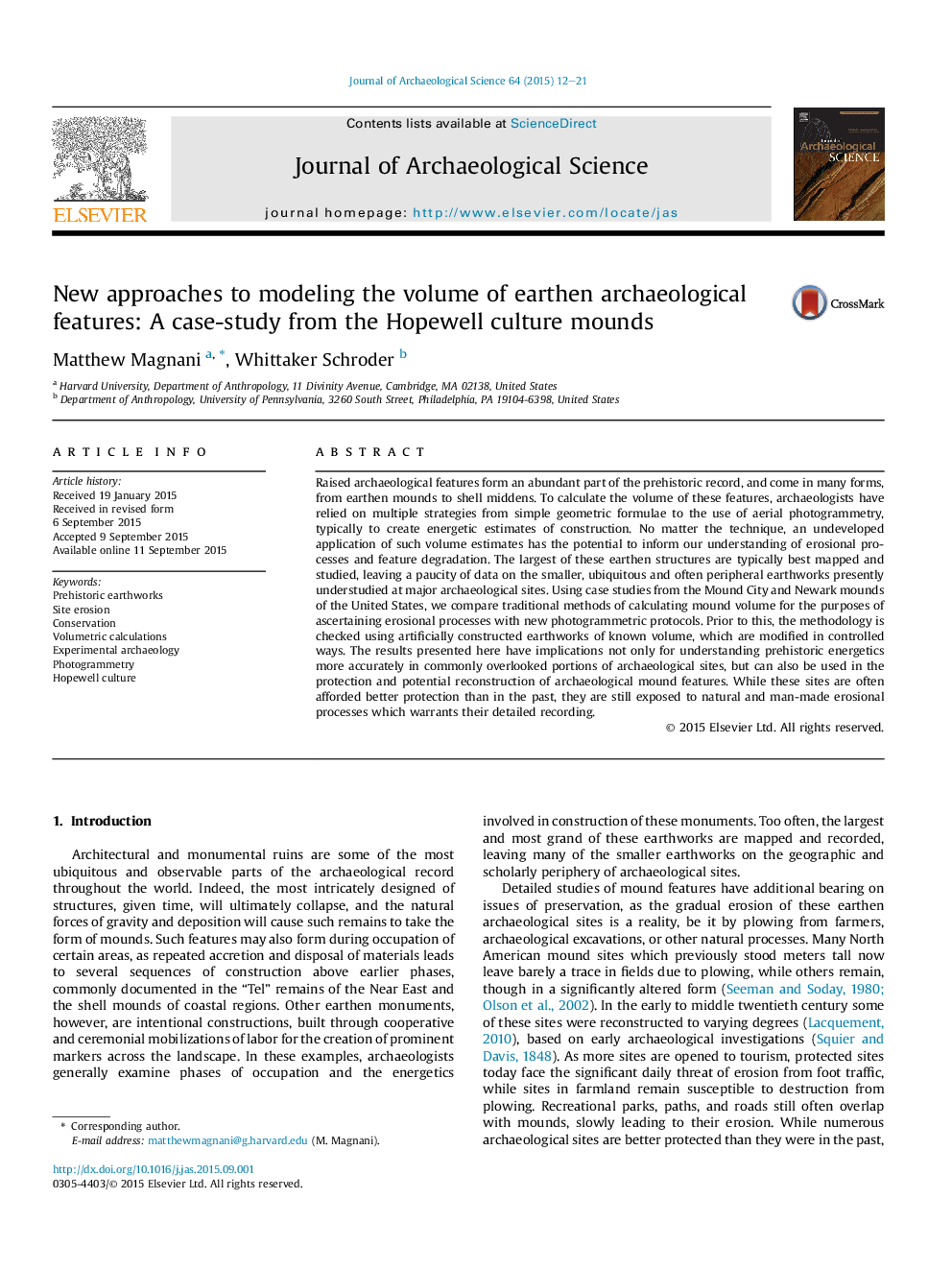| کد مقاله | کد نشریه | سال انتشار | مقاله انگلیسی | نسخه تمام متن |
|---|---|---|---|---|
| 1035339 | 1483896 | 2015 | 10 صفحه PDF | دانلود رایگان |
• Photogrammetric methods are used to calculate the volume of Middle Woodland period earthworks.
• Methodology estimates volumes of small to medium-sized earthworks, which are difficult to gauge with traditional formulae.
• Models can inform conservation plans for archaeological features and volume calculations can translate into energetic costs.
Raised archaeological features form an abundant part of the prehistoric record, and come in many forms, from earthen mounds to shell middens. To calculate the volume of these features, archaeologists have relied on multiple strategies from simple geometric formulae to the use of aerial photogrammetry, typically to create energetic estimates of construction. No matter the technique, an undeveloped application of such volume estimates has the potential to inform our understanding of erosional processes and feature degradation. The largest of these earthen structures are typically best mapped and studied, leaving a paucity of data on the smaller, ubiquitous and often peripheral earthworks presently understudied at major archaeological sites. Using case studies from the Mound City and Newark mounds of the United States, we compare traditional methods of calculating mound volume for the purposes of ascertaining erosional processes with new photogrammetric protocols. Prior to this, the methodology is checked using artificially constructed earthworks of known volume, which are modified in controlled ways. The results presented here have implications not only for understanding prehistoric energetics more accurately in commonly overlooked portions of archaeological sites, but can also be used in the protection and potential reconstruction of archaeological mound features. While these sites are often afforded better protection than in the past, they are still exposed to natural and man-made erosional processes which warrants their detailed recording.
Journal: Journal of Archaeological Science - Volume 64, December 2015, Pages 12–21
